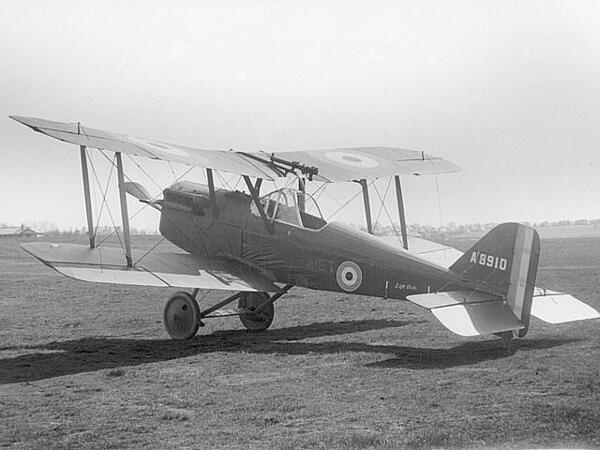SE 5
The SE 5 was one of the most famous British fighter aircraft to fly in World War One. Officially named the Royal Aircraft Factory S E 5, the plane got off to a poor start when it was ordered for the Royal Flying Corps and famous flying ace Albert Ball told General Trenchard that it was a “bloody awful machine”.
The prototype officially flew in November 1916. While it featured a Lewis machine gun on the front, its location behind the propeller and lack of synchronisation due to using a gearless engine meant the shooting of the propeller was not beyond the realms of possibility. As such, it was also fitted with a Vickers machine gun on the fuselage and another Lewis machine fun on a Foster mounting above the upper wing centre-section.
Aside from Ball’s poor review of the plane, it also had a bad history after the second prototype broke up in flight and killed the pilot. Other pilots also claimed that it was impossible to fly at speeds of less than 70 mph as it was too unstable.

The first SE 5’s to be used in combat were given to the No 55 Squadron of the RFC and were used in April 1917. Pilots were still nervous about flying it but reported back more favourably once they’d got used to its various idiosyncrasies. The pilots also admired some of its strengths including its build quality and its firepower. In fact, Lieutenant L M Barlow shot down 18 German aircraft in an SE 5 and was awarded the Military Cross three times as a result.
The SE 5 was also fast and relatively manoeuvrable - although originally fitted with 150 hp engines, later versions were fitted with 200 hp engines that gave them a top speed of 138 mph at sea level and a climb rate of 5,000 feet in under five minutes. They also had Vickers and Lewis machine guns attacked that made them impressive weapons. Most of ace Mick Mannock’s skills were gained by flying an SE 5 and his unit, No 74, totalled 140 kills between March 1918 and Armistice Day. It also proved itself to be an effective light bomber, able to carry four 25 Ib bombs that were used to bomb retreating German forces as they moved back towards Germany following the failure of the German Spring Offensive in 1918.
The SE5 was subject to constant change, with the landing gear, fuselage and armaments specifically targeted by engineers as needed research. The Lewis machine gun was also removed as an experiment and replaced with twin Lewis machine guns. A triple Lewis machine gun was also tried, although none worked as planned and the RFC decided that they would remain with the single Lewis machine gun.
In total, 5,205 SE 5’s were built, including one specifically modified by flying ace James McCudden for his own use. After the war, many were deemed not needed by the War Office and were sold off for around £700. Some went to civilian air schools while others went to air forces within the Commonwealth.
MLA Citation/Reference
"SE 5". HistoryLearning.com. 2025. Web.
